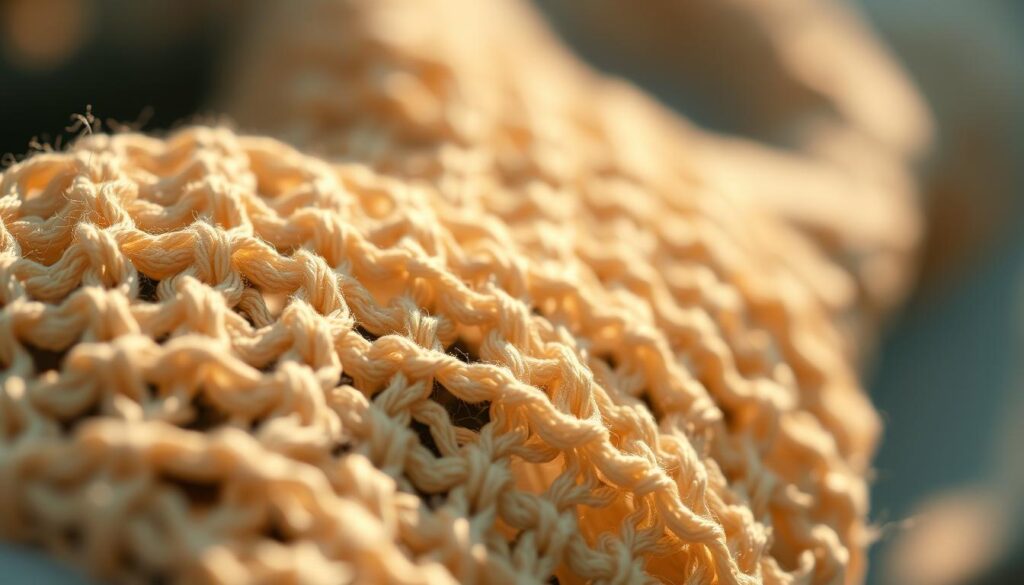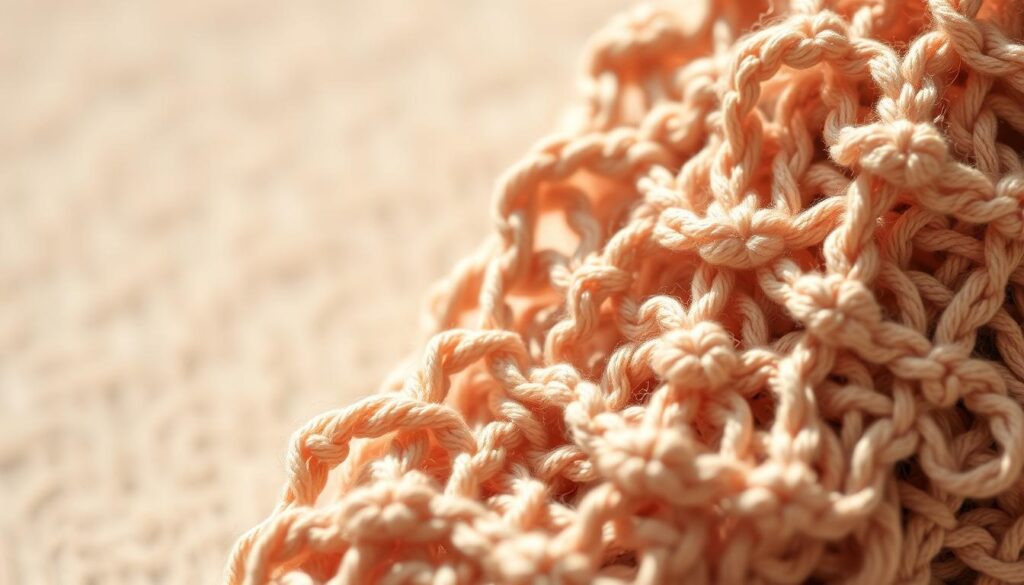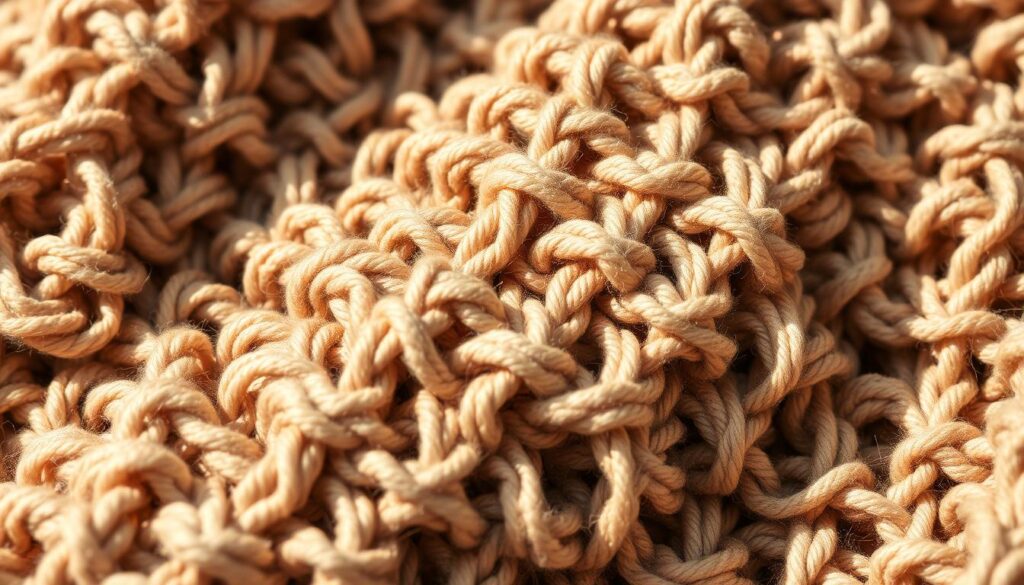Exploring crochet, you’ll find that mastering texture and dimension can make your projects stand out. With 15 key techniques, you can add depth and interest to your designs. Each method, from granny squares to Tunisian crochet, helps you create unique and special pieces.
Using different patterns and techniques, you can achieve various textures and dimensions. Whether it’s a garment, home decor, or accessory, knowing how to work with texture and dimension is crucial. Techniques like mosaic, corner-to-corner, and overlay crochet can bring your projects to life.
Key Takeaways
- Mastering crochet texture and dimension can elevate your projects and create stunning, professional-looking pieces.
- 15 essential techniques are available to add visual interest to your designs and create complex textures and dimensions.
- Different patterns, designs, and techniques can be incorporated into your crochet projects to create a wide range of textures and dimensions.
- Understanding how to work with crochet texture and dimension is key to creating a professional-looking finish.
- Various techniques, such as mosaic crochet, corner-to-corner crochet, and overlay crochet, can be used to add depth and visual interest to your projects.
- Crochet texture and dimension can be used to create a wide range of items, from garments and home décor items to accessories.
Understanding Texture in Crochet
As you start with crochet, knowing about texture is key. Texture comes from how stitches work together to look and feel a certain way. To get the right texture, you need to know different stitches like single crochet, half double crochet, and treble crochet.
Many crochet projects aim for a smooth fabric. This is done by keeping the tension even and using stitches like single crochet or half double crochet. For lacy and openwork fabrics, stitches like treble crochet or filet crochet are better. They make the fabric airy and delicate.
Creating Smooth and Even Fabric
To make a smooth fabric, use stitches that are dense and even. Single crochet and half double crochet are great for this. Keeping the tension steady and using the right hook size will help you get a smooth fabric. This is perfect for blankets or clothes.
Creating Lacy and Openwork Fabrics
For lacy and openwork fabrics, you need stitches that are airy and delicate. Treble crochet and filet crochet are perfect for this. They make a beautiful, lacy fabric great for shawls or doilies. Mixing these stitches with others, like triple crochet, can make your designs even more intricate and beautiful.
Here is a table summarizing the different stitches and their uses:
| Stitch | Use |
|---|---|
| Single Crochet | Smooth fabric, dense texture |
| Half Double Crochet | Smooth fabric, dense texture |
| Treble Crochet | Lacy and openwork fabrics |
| Filet Crochet | Lacy and openwork fabrics |

Techniques for Creating Texture
Exploring crochet, you’ll find many ways to add texture. Stitches like clusters and post stitches bring depth to your work. The yarn and hook size you pick also matter a lot.
Working in rounds makes a smooth, spiral texture great for hats and sleeves. Rows, on the other hand, let you make detailed patterns. Spirals add a special touch, made by working without joining rounds.

Advanced stitches like bobble and puff can make your work look complex. These stitches involve making loops in one stitch, adding volume and interest. For example, bobble stitch uses 3-5 double crochet in one stitch.
Working in Rounds vs. Rows
Choosing between rounds and rows depends on your project and texture goals. Rounds are best for a smooth, spiral look. Rows are more flexible for detailed patterns.
Using Different Yarns
Yarn choice affects your project’s texture. Thicker yarns make a dense, chunky fabric. Thinner yarns result in a lighter, more delicate one. Try different yarns and hooks to find the right texture for your project.
Exploring Textured Stitches
As you start crocheting, you’ll find many textured stitches. These add depth and interest to your projects. Stitches like the shell, popcorn, and bobble can create unique patterns. Mixing these stitches lets you show off your creativity.
Working with textured stitches means knowing how to mix them. You can use motifs and repeats to build a design. For instance, the v-stitch can be a base, and then add moss stitch or bobble stitch for texture.
Some popular textured stitches include:
- Shell stitch: a classic stitch that creates a textured, shell-like pattern
- Popcorn stitch: a fun and playful stitch that adds a pop of texture to your project
- Bobble stitch: a stitch that creates a small, rounded bobble of yarn
- Moss stitch: a versatile stitch that can be used to create a range of textures and patterns

By trying out different textured stitches, you can make unique projects. These can be blankets, hats, or decorations. Textured stitches add depth and interest to your work.
| Stitch | Description | Usage |
|---|---|---|
| Shell stitch | Creates a textured, shell-like pattern | Decorative edges, blankets, shawls |
| Popcorn stitch | Adds a pop of texture to your project | Blankets, pillows, decorative items |
| Bobble stitch | Creates a small, rounded bobble of yarn | Blankets, hats, scarves |
Designing with Texture
The world of crochet is full of chances to play with texture and depth. You can make warm blankets, stylish scarves, or fancy shawls. Adding texture to your projects can make them really special.
Looking for inspiration? Check out crochet books, magazines, online tutorials, and social media like Pinterest and Instagram. These places are full of ideas, techniques, and patterns to spark your creativity.
Remember, crochet is all about trying new things. Don’t hesitate to learn new stitches, use different yarns, and explore new ideas. By being creative and open to new things, you can make unique pieces that show off crochet’s amazing texture.

